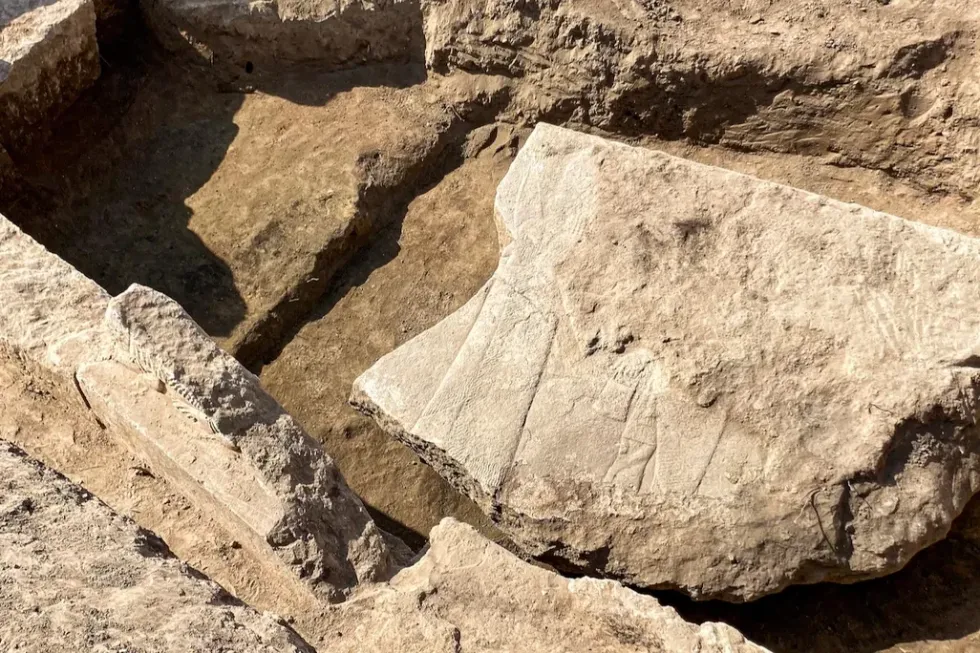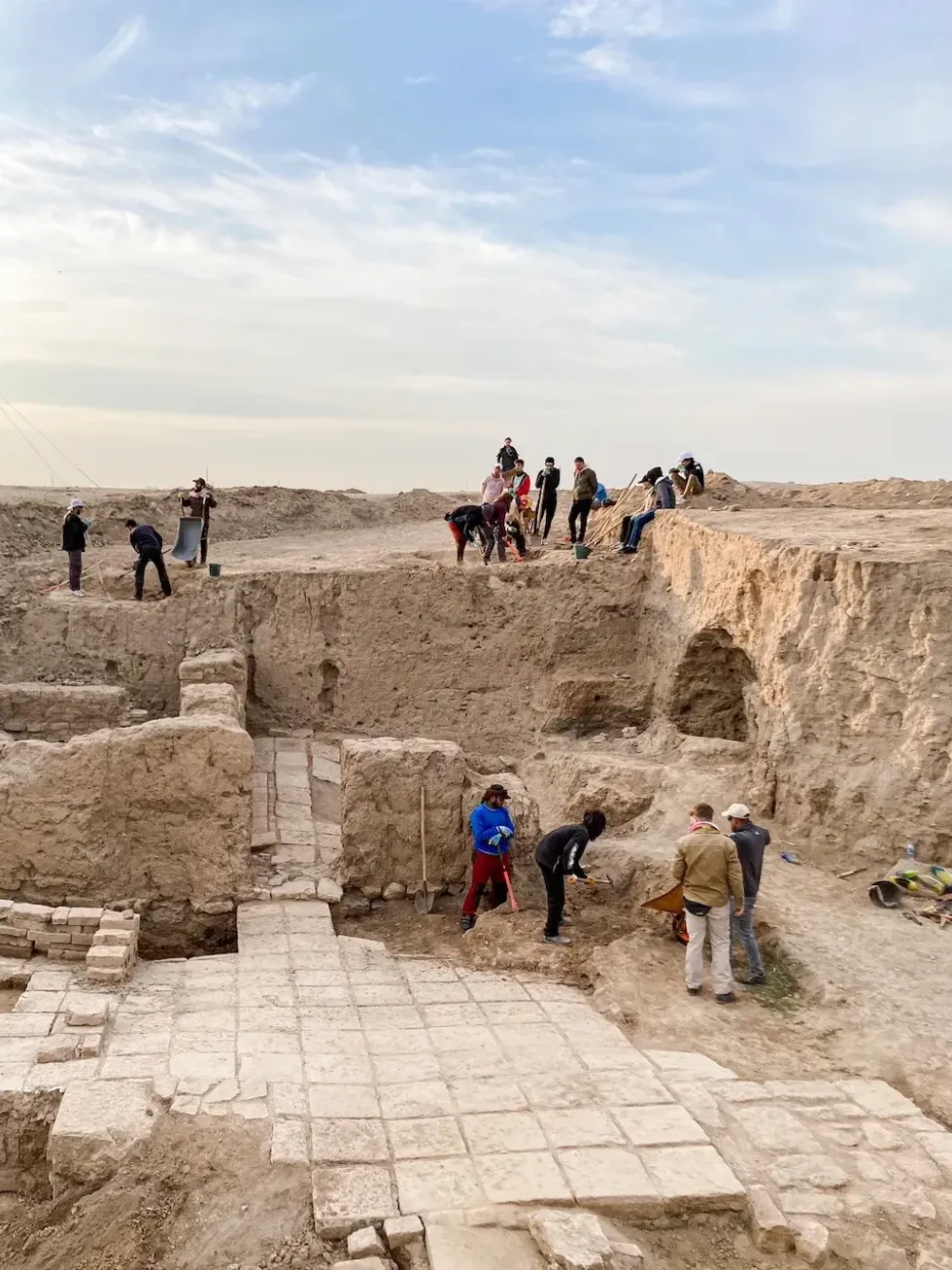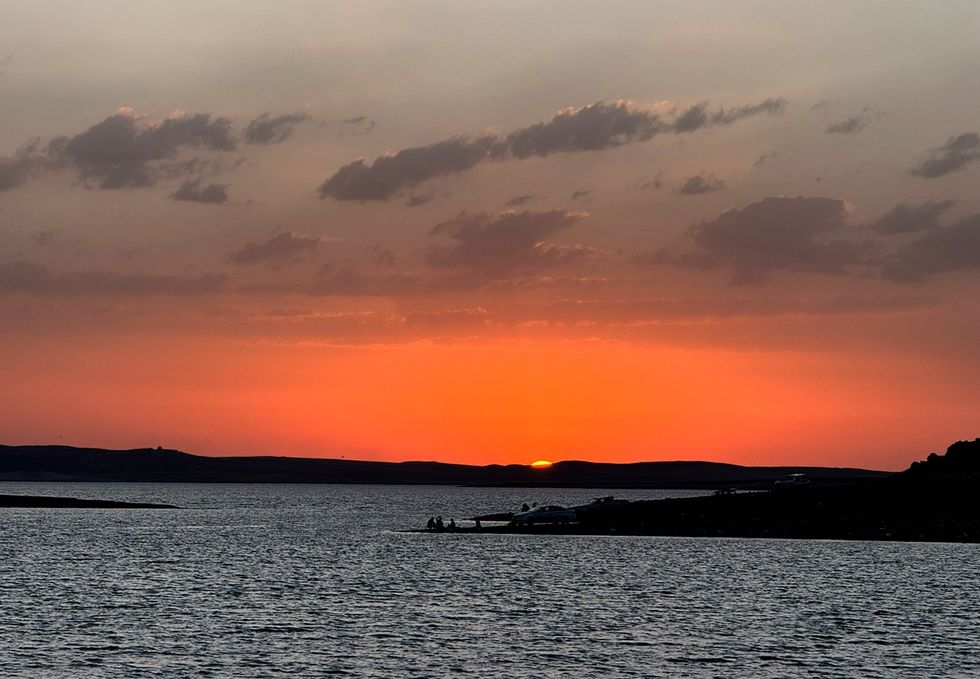Archaeology breakthrough as rare stone unearthed depicting seventh century Assyrian king surrounded by gods

The discovery is particularly significant because religious relief images from the Assyrian Empire rarely contained depictions of major deities
Don't Miss
Most Read
Archaeologists have unearthed an ancient stone slab in Iraq depicting an Assyrian emperor from the seventh century BC surrounded by deities worshipped in the Mesopotamian civilisation.
The massive slab, measuring approximately five-and-a-half meters (16ft) long and three meters (10ft) wide, was discovered in the throne room of the North Palace of King Ashurbanipal in the ancient city of Nineveh, near modern-day Mosul.
Nineveh is considered one of the most important parts of North Mesopotamia, having become the capital of the Assyrian empire in the late eighth century BC under King Sennacherib.
The stone carving would have weighed some 12 tonnes, according to researchers involved in the excavation.

Archaeologists have unearthed a remarkable ancient stone slab in Iraq depicting an Assyrian emperor from the seventh century BC surrounded by deities worshipped in the Mesopotamian civilisation
|Aaron Schmitt/ Heidelberg University
Experts have described the find as "extraordinary" for its impressive size and the scenes it depicts.
The discovery is particularly significant because religious relief images from the Assyrian Empire rarely contained depictions of major deities.
Aaron Schmitt from the Institute of Prehistory, Protohistory and Ancient Near Eastern Archaeology said: "Among the many relief images of Assyrian palaces we know of, there are no depictions of major deities."
The newly uncovered slab shows King Ashurbanipal, the last great ruler of the Assyrian empire, at its centre flanked by two supreme deities: the gods Ashur and Ishtar, the patron goddess of Nineveh.
LATEST DEVELOPMENTS:

Experts have described the find as extraordinary for its impressive size and the scenes it depicts
|Aaron Schmitt/ Heidelberg University
It also features a fish-like deity, who grants the gods and the sovereign salvation and life, as well as a supporting figure with arms raised, believed to be a scorpion-man.
Dr Schmitt said: "These figures suggest that a massive winged sun disk was originally mounted above the relief."
Excavations have been underway at a core sector of the North Palace since 2022, led by Professor Aaron Schmitt of Heidelberg University, Germany.
The slab was originally located at a site across from the main entrance to the throne room, which researchers believe could be the most important place in the palace.

The massive slab was discovered in the throne room of the North Palace of King Ashurbanipal in the ancient city of Nineveh, near modern-day Mosul
|Getty
Fragments were uncovered in an earth-filled pit behind this niche, which researchers suspect was dug during the Hellenistic period in the third or second century BC.
Dr Schmitt explained: "The fact that these fragments were buried is surely one reason why the British archaeologists never found them over a hundred years ago."
Over the coming months, researchers plan to study the slab in detail and publish their findings in a scientific journal.
The team is also working with the Iraqi State Board of Antiquities and Heritage to display the relief in its original location.











